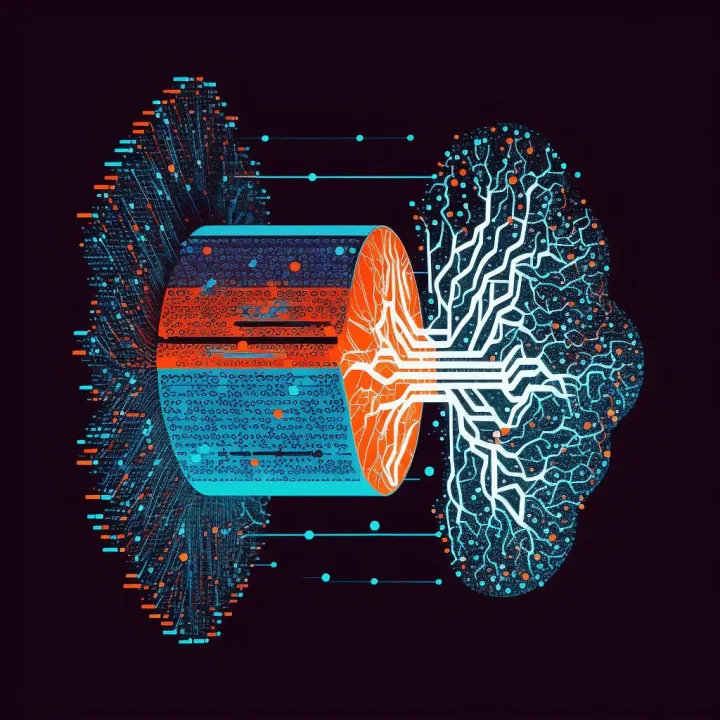Communications-Based Train Control (CBTC)
Our comprehensive guide explains the benefits of CBTC, the technology behind it, and how it can improve safety, reliability, and efficiency in railway transportation. Learn how our CBTC services can help your business achieve better results and stay ahead of the curve.

Communications-Based Train Control (CBTC) is a railway signaling system that employs high-speed data communications to facilitate train control and ensure trains’ safe and efficient movement. CBTC can provide continuous communication and precise train location data, allowing for automatic train supervision and control. This system eliminates the need for traditional trackside signaling equipment, as all necessary information is transmitted wirelessly between the train and wayside units. CBTC is widely adopted worldwide in metro systems and is increasingly utilized in mainline railway applications due to its ability to increase capacity, safety, and reliability.
CBTC has numerous benefits over traditional signaling systems, including increased capacity and reliability and enhanced safety features such as automatic train protection. CBTC can also improve energy efficiency and reduce operating costs through optimized train movement and reduced headways between trains. These advantages make CBTC an attractive option for railway operators looking to modernize their signaling systems and improve overall system performance. As with any new technology, there are challenges associated with implementing CBTC, including the need for significant capital investment and potential disruption to existing train operations during the installation process.
Communications-Based Train Control (CBTC) is a highly advanced railway signaling system that utilizes wireless communication and precise train location data to provide safe and efficient train control while eliminating the need for traditional trackside signaling equipment. CBTC offers significant advantages over conventional signaling systems, making it an attractive option for railway operators looking to modernize their signaling systems and improve the overall design.
Main Features of CBTC
CBTC (Communications-Based Train Control) is a modern signaling system used in the railway industry that relies on wireless communications between trains and wayside equipment. This system enables continuous data exchange, including train location and speed, which allows for a more efficient and safe train operation. CBTC also features automatic train protection, which can prevent trains from colliding or exceeding speed limits by automatically controlling the train’s movements based on data such as track occupancy and signal aspects.
Additionally, CBTC can provide real-time information to the train operator and control center, allowing for quick responses to any issues that may arise during operations, ultimately improving the overall reliability and capacity of the railway system. Moreover, CBTC can reduce the headway between trains by allowing for shorter train spacing and more precise control over train movements, which can increase the capacity of the railway system without requiring additional infrastructure investments. CBTC supports various operational modes, including manual, automatic, and semi-automatic control.
Furthermore, CBTC can adapt to changing conditions such as train schedules or track maintenance, providing flexibility and optimizing system performance. In summary, CBTC is a highly advanced signaling system that offers numerous benefits to the railway industry, including improved safety, increased capacity, and enhanced operational efficiency. CBTC is a complex and sophisticated system that requires skilled personnel for its design, installation, testing, commissioning, operation, and maintenance. Therefore, specialized training and certification programs are necessary to ensure that personnel possesses the required knowledge and skills to handle CBTC systems.
Overall, CBTC represents a significant advancement in railway signaling technology and has the potential to revolutionize train operations. Future research can explore the potential of CBTC in combination with other emerging technologies, such as artificial intelligence and big data analytics, to further enhance railway system performance and to investigate the impact of CBTC on passenger satisfaction and the overall economic benefits of implementing this technology in railway systems.
Levels of automation in CBTC
Communication-Based Train Control (CBTC) systems can be classified into four levels of automation, each with increasing degrees of autonomy and complexity.
First Level
The first level of automation is known as the "fixed block" system, where trains are separated by fixed distances along the track and operate on predetermined schedules. This level of automation does not provide real-time information on the location and speed of trains and therefore requires a significant safety margin between each train.
Second Level
The second level of automation is the "moving block" system, which allows for more precise control and monitoring of train movements by using real-time information such as train position and speed to adjust the safe separation distance between trains dynamically. This level of automation reduces the required safety margin between trains, allowing for more efficient use of track capacity and higher train frequencies.
Third Level
The third level of automation is known as "semi-automatic train operation" (STO), where the train's acceleration, deceleration, and station approach is controlled automatically. However, the train operator is still responsible for opening and closing doors and starting the train at each station. This level of automation is commonly used in metro systems worldwide, providing improved reliability and reduced operating costs.
Fourth & Highest Level
The fourth and highest level of automation in CBTC is "fully automatic train operation" (ATO), where trains operate without any human intervention from start to end of the journey. This level of automation requires the highest degree of system reliability and redundancy, as any malfunction or error can have serious consequences. Overall, the increasing levels of automation in CBTC systems offer greater operational efficiency and safety benefits but also require more complex and sophisticated technologies to ensure the system operates reliably and safely at all times.

CBTC Architecture
The CBTC architecture is composed of several key elements:
Train to Wayside
Train-to-wayside communication is critical to Communication-Based Train Control (CBTC) systems, enabling real-time communication between the train and wayside equipment. The equipment used in train-to-wayside communication can vary depending on the specific CBTC system and communication technology. The commonly used equipment in train-to-wayside communication includes:
- Antennas: Antennas send and receive signals between the train and wayside equipment. Different types of antennas, such as Wi-Fi, radio, and optical antennas, can be used depending on the communication technology used.
- Transponders: Transponders are small devices installed along the track that communicate with the train's onboard equipment. They transmit information about the train's position and speed to the train.
- Beacons: Beacons are another type of wayside equipment that can communicate with the train. They emit a signal detected by the train's onboard equipment, providing information about the train's location and speed.
- Train control centers: The train control center is the hub of the CBTC system, where all train movements are monitored and controlled. It includes servers, software, and operator workstations to manage the communication and control of trains.
- Wayside interface units: Wayside interface units serve as the interface between the wayside equipment and the communication network, providing a secure and reliable connection.
Train Positioning System
The equipment used for train positioning can vary depending on the specific technology and the Communication-Based Train Control (CBTC) system. However, some of the commonly used equipment for train positioning in CBTC systems include:
- GPS receivers: GPS receivers receive signals from a network of GPS satellites to determine the train's precise location and speed.
- Inertial Measurement Units (IMUs): IMUs are sensors that measure the train's acceleration and angular velocity to determine the train's position and speed.
- Track circuits: Track circuits are electrical circuits installed along the track that detect the presence of a train. They are often used with train detectors to determine the train's position.
- Train detectors: Train detectors are sensors that detect the presence of a train on the track. They can be used with track circuits to determine the train's position.
- Beacons: Beacons are small devices installed along the track that transmit a signal detected by the train's onboard equipment to determine its location.
- Cameras: Optical systems use cameras installed along the track to capture images of the train and use computer vision algorithms to determine its position.
Control Center
The Control Center of a Communication-Based Train Control (CBTC) system is the central point of command and control for the entire system. It is responsible for coordinating the communication and operation of all the components of the CBTC system, including wayside equipment, onboard equipment, and any other subsystems.
The Control Center is equipped with various hardware and software tools that allow operators to monitor and manage the performance of the CBTC system in real time. These tools may include graphical user interfaces (GUIs), control consoles, and advanced algorithms that automate certain functions.Some of the key functions of the Control Center in a CBTC system include:
- Train tracking and supervision: The Control Center monitors the location and movement of trains in the system and provides real-time updates to operators.
- Train routing and scheduling: The Control Center determines the most efficient route for each train based on speed, capacity, and station dwell times.
- Train regulation: The Control Center regulates the speed and spacing of trains in the system to maintain safe and efficient operations.
- Fault detection and recovery: The Control Center monitors the CBTC system for faults or malfunctions and initiates recovery procedures as needed.
- Communication management: The Control Center manages all communication between the CBTC system components, including wayside equipment, onboard equipment, and other subsystems.
Communication Network
A Communication-Based Train Control (CBTC) system relies heavily on its communication network equipment to ensure all system components can communicate effectively and in real-time. Here are some of the key types of communication network equipment used in a CBTC system:
- Wayside Radio Network: A wireless radio network communicates between the wayside equipment and the trains. These radios may communicate with different frequencies or protocols, such as Wi-Fi or a proprietary protocol.
- Train Radio Network: A wireless radio network is used to communicate between the onboard and wayside equipment. These radios may also use different frequencies or protocols to communicate.
- Optical Fiber Network: An optical fiber network provides high-speed and reliable communication between different waysides and control center equipment.
- Ethernet Network: An Ethernet network is used to connect different components of the CBTC system, such as the control center, wayside equipment, and onboard equipment. This allows for centralized control and real-time monitoring of the system.
- Network Switches and Routers: Network switches and routers are used to connect different components of the CBTC system, manage network traffic, and ensure that communication is reliable and secure.
- Servers and Data Storage: Servers and data storage devices store and process data generated by the CBTC system. This data may include train schedules, status updates, fault logs, and other system information.
Technology used in CBTC
CBTC relies on various technologies, including wireless communication systems, computer networks, trackside equipment such as transponders and beacons, and onboard equipment like radios, antennas, and train control units (TCUs).
These technologies provide real-time information about train locations, speeds, and movements. CBTC technology also utilizes advanced algorithms and data analytics to optimize train movements, reduce headways, and improve overall system capacity
- Train-to-wayside communication: CBTC systems use various communication technologies such as Wi-Fi, radio, and optical systems to communicate between the train and wayside equipment.
- Train positioning: CBTC systems use various positioning technologies such as GPS, inertial measurement units, and track circuits to determine the train's precise location and speed.
- Train control algorithms: CBTC systems use advanced control algorithms to calculate the train's optimal speed and braking distance based on real-time information about the train's location, speed, and the track ahead.
- Cybersecurity: CBTC systems use various cybersecurity measures such as encryption, authentication, and access control to ensure the system's safety and reliability.
- Data analytics: CBTC systems use advanced data analytics techniques to analyze data from various sources, such as train sensors, wayside equipment, and weather forecasts, to optimize train operations and improve safety.
Moreover, CBTC technology has fail-safe features that ensure safe train operations, even in equipment failure or communication disruptions.
Advanced computing
IoT, Edge, Fog, and AI are all technologies that can be used in CBTC (Communications-Based Train Control) solutions. IoT refers to the interconnection of physical devices with the internet. Edge computing is a paradigm that integrates IoT technologies and cloud computing systems. It reduces the communications bandwidth between sensors and the central data center by increasing computation near the data source.
Fog computing lies somewhere in between edge and cloud computing. Data is collected from sensors and sent to a local area network (LAN) instead of to the cloud centrally. AI (Artificial Intelligence) can be used in CBTC solutions to analyze data generated by trains, trackside equipment, and other sources. AI can help improve train scheduling, optimize energy consumption, detect faults before they occur, and provide predictive maintenance.
AI can also help tackle forecasting through data-driven decisions and drive greater visibility across the supply chain and logistics. The fusion of IoT, AI, edge-fog-cloud, and blockchain technologies is becoming increasingly popular in various industries. Digital transformation is characterized by the convergence of these technologies in multiple dimensions blurring the lines between the physical and digital worlds. The integration of these technologies can power end-to-end operational business solutions by accelerating data processing and sensitive processing/response, which can be much easier to achieve in edge computing architectures.
We can help you
Get in touch with us to explore our expertise with CBTC Solutions and help you deliver the next-gen technology to your customers.





